PERSHING
Table of contents:
Read The PERSHING Project Office
Read The PERSHING Missile System
Read Elimination of the PERSHING Missile System
Read System Chronology
View PERSHING photos
The PERSHING Project Office
|
Responsibility for systems management and engineering of the PERSHING program was initially assigned to the Army Ballistic Missile Agency (ABMA) at Redstone Arsenal, Alabama, in 1958. A series of project directors exercised full authority for the program's overall development. When ABMA was absorbed into the Army Ordnance Missile Command (AOMC) on December 11, 1961, the PERSHING, like all other major weapon systems assigned to AOMC, entered under a form of project management. This project office was the direct forerunner to the vertical project management system established by the U.S. Army Materiel Command.(AMC) on August 1, 1962. The U.S. Army Missile Command (MICOM), a major subordinate command of AMC, was activated at Redstone Arsenal on this same date. The PERSHING was one of the original 30 items placed under this form of management at MICOM. The PERSHING Project Office remained under MICOM's jurisdiction until May 1, 1987, when the Program Executive Office (PEO) for Fire Support was established at Redstone Arsenal, Alabama. After the historic Intermediate Range Nuclear Forces (INF) Treaty between the United States and the USSR became effective on June 1, 1988, the PERSHING Project Office subsequently returned to MICOM's jurisdiction in March 1989. Responsibility for PERSHING project management was placed under the direction of the newly established MICOM Weapon Systems Management Directorate on August 27, 1989. |
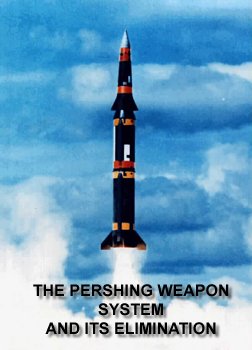
|
The PERSHING Missile System
|
Conceived as a replacement for the REDSTONE, the PERSHING I was first deployed in August 1963. A second generation system, the PERSHING la began replacing the PERSHING I in 1969. The improved system provided increased reliability and flexibility, additional ease of maintenance, lower mission cost, and enhanced operational time. An evolutionary improvement of the PERSHING la system, the PERSHING II was first deployed in December 1983. Through the use of a terminally guided reentry vehicle with a new warhead, new propulsion sections, and modified PERSHING la ground support equipment, the PERSHING II provided increased effectiveness covering longer ranges with reduced collateral damage over the PERSHING la. The increased range and pinpoint accuracy of the PERSHING II were major factors influencing the Soviet Union's decision to seek the Treaty on Intermediate Range Nuclear Forces in which the United States and the USSR agreed to eliminate an entire class of nuclear missiles. |
Elimination of the PERSHING Missile System
|
In accordance with INF Treaty provisions, all of the U.S. Air Force's Ground Launched Cruise Missiles (GLCMs) and the U.S. Army's tactical PERSHING II missile stages, launchers, trainers, and deployed reentry vehicles had to be eliminated by May 31, 1991. The Army's PERSHING la missiles had to be eliminated within 18 months of the treaty's effective date. A total of 234 PERSHING II missiles and 169 PERSHING la missiles were covered by the treaty. Army contractors completed the destruction of the last PERSHING la missiles on July 6, 1989, five months ahead of schedule. The last PERSHING II was eliminated in May 1991. The majority of PERSHING missile stages were burned (static fired) and then crushed, primarily at Longhorn Army Ammunition Plant, Texas, or at Pueblo Depot Activity, Colorado. Representatives from the Soviet Inspection Team and the U.S. On-Site Inspection Agency were present to witness the elimination process. The launchers were disassembled and major components-the major parts of the erection mechanism and launcher chassis-were cut in half. These treaty limited items were destroyed at Pueblo Depot Activity or at the Equipment Maintenance Center-Hausen (an activity of the Mainz Army Depot) near Frankfurt, Germany. Containers were either cut in half or detonated. Each side also had permission to destroy 15 missiles and launchers by disabling, then permanently exhibiting them in museums and similar facilities. The 15 U.S. missiles and launchers were split between the Army's PERSHING II and the Air Force's GLCMs. A PERSHING II missile and launcher were put on display at the Field Artillery Museum, Fort Sill, Oklahoma; White Sands Missile Range, New Mexico; the Eastern Test Range, Cape Canaveral, Florida; and the Alabama Space and Rocket Center, Huntsville, Alabama. A missile only was exhibited also at Langley Air Force Base, Hampton, Virginia. The final two PERSHING II missiles and the last launcher were donated to the Smithsonian Institution's Air and Space Museum, which exchanged with the Soviet Union one PERSHING II for an SS-20 missile. |
System Chronology
|
31 October 56 The Chief of Research
and Development Department of the Army (DA), requested
that the Ordnance Corps conduct a feasibility study of a
ballistic missile with a required range of 500 nautical
miles and a minimum range of 750 nautical miles.
14 November 56 The Ordnance Corps
forwarded the request for a medium range ballistic
missile (MRBM) study to the Army Ballistic Missile Agency
(ABMA) thus generating the basic requirement for the
system to be known as the PERSHING I missile. 7 January 58 The Joint Chiefs of Staff recommended and the Secretary of Defense approved the authorization for the Army to proceed with development of a solid-propellant missile to replace the REDSTONE. This approved replacement was known at ABMA as the REDSTONE-S (solid).
16 January 58 The Department of
Defense (DOD) announced that the new solid-propellant
missile had been named the PERSHING in honor of General
of the Armies of the United States John J. (Black Jack)
Pershing, famed commander of the American Expeditionary
Forces during World War I.
19 February 58 The Secretary of the
Army assigned responsibility for the overall direction of
the PERSHING I missile development program to the Army
Ballistic Missiles Committee. At the same time, he gave
responsibility for systems management and engineering of
the PERSHING I development to ABMA.
28 March 58 The Martin Company of
Orlando, Florida, was awarded a cost-plus-fixed-fee (CPFF) letter contract for research, development, and
initial production of the PERSHING I system under the
technical supervision and concept control of the
Government.
10 April 58 The Ordnance Technical
Committee approved the establishment of the PERSHING
Project with a IA priority.
9 October 58 The Ordnance Technical
Committee formally approved military characteristics for
the PERSHING I missile system.
18 April 59 ABMA accepted the
first PERSHING I missile from the research and
development contract definitized with Martin on 25 June
58.
November 60 The U.S. Army Artillery
and Missile School at Fort Sill, Oklahoma, was designated
as the proponent agency in the preparation of Army
training programs for the PERSHING I system.
October 61 The Martin Company was
consolidated with the American Marietta Company, forming
the Martin Marietta Corporation.
October 61 The Martin Marietta
Corporation received the first production contract for
PERSHING I tactical missiles and ground support
equipment.
June 62 The first battery of the
first U.S. Army PERSHING I tactical missile battalion-the
2d Missile Battalion, 44th Artillery-was activated.
1 August 62 The PERSHING I became
one of the original items placed under project management
by the U.S. Army Materiel Command (AMC).
31 October 62 Martin Marietta
delivered the first tactical Ordnance and Artillery
ground support equipment sets for the PERSHING I.
December 62 The PERSHING I's
readiness date was met when the first tactical missile
(Missile 505) was delivered. It later became the first
PERSHING I service test missile fired in April 63.
February 63 The PERSHING I
modification program began.
September 63 Germany formally accepted
a Military Assistance Program (MAP) offer for a joint
maintenance float and support services for the PERSHING
I.
January 64 The Secretary of Defense
assigned the PERSHING I weapon system to a Quick Reaction
Alert (QRA) role after a DOD study showed that the
PERSHING I would be superior to tactical aircraft for the
QRA mission.
March 64 The first German PERSHING
I wing began unit training at Fort Sill, Oklahoma.
June 64 The first U.S. PERSHING I
unit to be deployed overseas-the 4th Missile Battalion,
41st Artillery-became operational.
25 June 64 The REDSTONE missile,
which the PERSHING I replaced, was classified obsolete.
4 December 64 The Secretary of
Defense requested that the Army define the modifications
required to make the PERSHING I suitable for the QRA
role. This directive initiated the PERSHING la program.
28 March 67 The PERSHING I accomplished a significant first when B Battery, 3d Battalion, 84th Artillery, which was deployed to Germany, successfully launched two missiles simultaneously and a third missile 30 minutes later from Blanding, Utah, into White Sands Missile Range (WSMR).
August 67 Martin Marietta received
the production contract for the PERSHING la.
31 July 68 AMC granted authority
for limited release of PERSHING la equipment designated
for continental United States (CONUS) deployment. May 69 The first PERSHING la CONUS battalion-the 2d Battalion, 44th Artillery-received its equipment. This battalion's main mission was training.
September 69 The conversion from
PERSHING I to PERSHING la for the first U.S. European
battalion--the 4th Battalion, 41st Artillery--was
completed. This initiated Project SWAP, a program for
replacing PERSHING I equipment deployed to Europe with
PERSHING la equipment.
22 January 70 Germany officially
accepted the SWAP program.
18 March 70 Project SWAP was
completed ahead of schedule.
July 70 Deliveries of PERSHING la
equipment for Army requirements were completed.
7 March 74 The Deputy
Secretary of Defense authorized the Army to
proceed with the advanced development of the
PERSHING II (see photo, left).
March 75 The contract option to
begin the PERSHING advanced development was exercised.
18 November 77 The first PERSHING II
missile advanced development firing took place.
20 February 79 The PERSHING II system
formally entered the engineering development stage.
December 79 The NATO Ministers
formally approved the basing of the PERSHING II missile
system in Western Europe.
19 February 80 President Jimmy Carter
awarded the PERSHING II program the BRICK-BAT (DX)
priority rating, the highest national priority granted to
a system.
December 81 The PERSHING II program
entered the production phase.
August 82 The PERSHING Project
Office celebrated its 20th anniversary.
April 83 The central training
facility for transition training from PERSHING Ia to
PERSHING II was activated at Cape Canaveral Air Force
Station. Florida.
15 December 83 The initial
operational capability for the PERSHING II was achieved
when the 56th Field Artillery Brigade received its
equipment.
30 June 84 Deployment of the
first PERSHING II battalion was completed in Europe.
1 August 84 The CONUS deployment of
the PERSHING II began.
13 December 85 The PERSHING II weapon
system successfully achieved full operational capability
in Europe.
20 to 21 May 87 The first
PERSHING II night launches occurred at Cape Canaveral Air
Force Station, Florida. One of the missiles launched
during this testing marked the 500th flight of the
overall PERSHING program, which included the PERSHING I,
PERSHING la, and PERSHING II.
8 December 87 The United States and
the USSR signed the Intermediate Range Nuclear Forces
(INF) Treaty.
27 May 88 The U.S. Senate
ratified the INF Treaty.
1 June 88 The PERSHING INF
Management Control Center became operational on a 24-hour
basis at Redstone Arsenal.
2 June 88 A CPFF contract was
awarded to the Thiokol Corporation for the elimination of
PERSHING rocket motors by static firing to meet the
requirements of the INF Treaty. This contract also
provided for the crushing and disposal of PERSHING la
motor cases and nozzles.
1 September 88 In accordance with the
provisions of the INF Treaty and the approved schedule,
the stand down of the first PERSHING II United States
Army, Europe (USAREUR) battery began.
8 September 88 The U.S. Army began eliminating PERSHING missile rocket motors as prescribed in the INF Treaty when a PERSHING II and a PERSHING la first stage motor were static fired at longhorn Army Ammunition Plant. Texas. Following the firings, both cases were placed in a hydraulic crusher and flattened.
October 88 The elimination through
static burn (firing) of PERSHING la rocket motors began
on a regularly scheduled basis at longhorn Army
Ammunition Plant. An average of 48 first and second stage
motors were eliminated per month by Morton Thiokol
contractor personnel. Representatives from the Soviet
Inspection Team and the On-Site Inspection Agency were
present to witness the elimination process.
October 88 The first nine PERSHING
II launchers were eliminated at the Equipment Maintenance Center-Hausen, Frankfurt, Federal Republic of Germany.
December 88 The initial elimination
of nine PERSHING first and second stage motors, reentry
Vehicles, warhead and radar section airframes, and 18
trainer stages was completed at Pueblo Depot Activity,
Colorado.
13 May 89 After further
negotiations in Geneva, Switzerland, between the U.S. and
Soviet governments, the Soviet Inspection Team began
accepting incomplete PERSHING la motors for elimination.
6 July 89 The last PERSHING la
motor stages were eliminated at Longhorn Army Ammunition
Plant, five months ahead of schedule. A total of 343
PERSHING la motor stages were destroyed, marking the
first time an entire class of nuclear weapons had been
eliminated.
18 June 90 The dedication
ceremony for a PERSHING II/SS-20 missile INF Treaty
display was held at the Smithsonian Air and Space Museum,
Washington, DC A similar exhibit is on display at the
Soviet Military Museum in Moscow.
September to October 90 The last CONUS treaty-related items
consisting of PERSHING II launchers and trainer missile
stages, were retrograded from Redstone Arsenal and Fort
Sill to Pueblo Depot Activity.
20 September 90 As ordered by the
Joint Chiefs of Staff, pieces of PERSHING II missiles
were delivered to the United Nations in New York City for
use with Soviet SS-20 missile pieces in a permanent art
exhibit at the UN being designed by a Soviet artist.
FY 90 The German Air Force (GAF)
unilaterally agreed to the retrograde of the PERSHING la
system from their inventory. The GAF would keep the
system fielded through mid-May 1991, after which time the
United States would eliminate the GAF PERSHING la motors.
1 October 90 At 1800 hours Central
European time, the last tactical PERSHING II missile
stage was put in its container and verified safe to ship.
1 November 90 The last CONUS PERSHING
II battery stood down at Fort Sill, Oklahoma, and the
battalion--the 3/9th Field Artillery--was deactivated.
May 91 The first and second
stage rocket motors of the last PERSHING II missiles were
eliminated at Longhorn Army Ammunition Plant. This was in
accordance with INF Treaty provisions requiring the
elimination of an entire class of nuclear missiles by
both the United States and USSR no later than 31 May 91.
May 91 The 56th Field Artillery
Command (PERSHING) and subordinate elements deactivated,
ending three decades of PERSHING service to the nation. |
PERSHING Photos
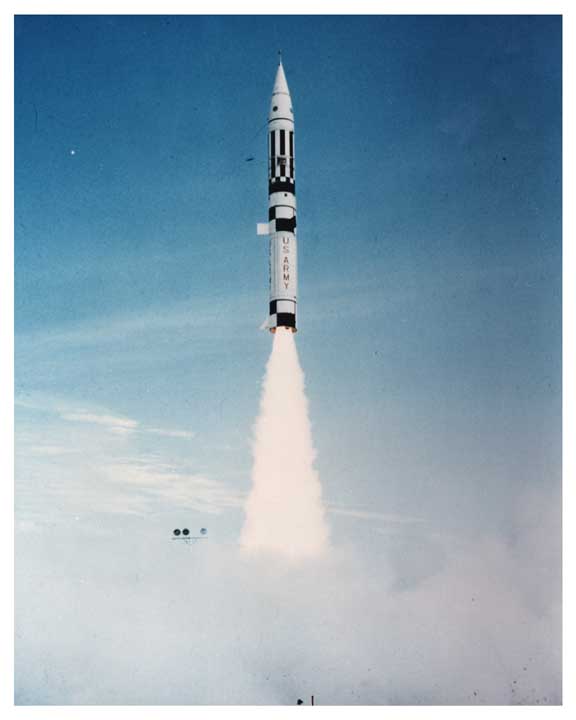 |
 |
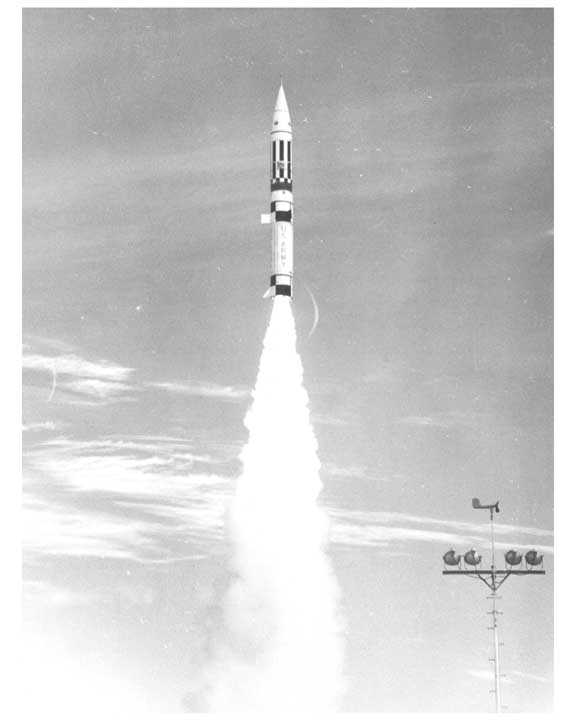 |
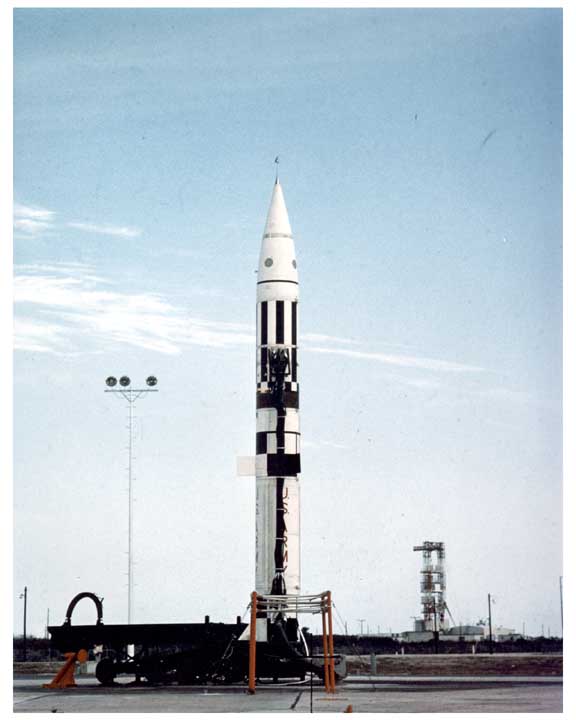 |
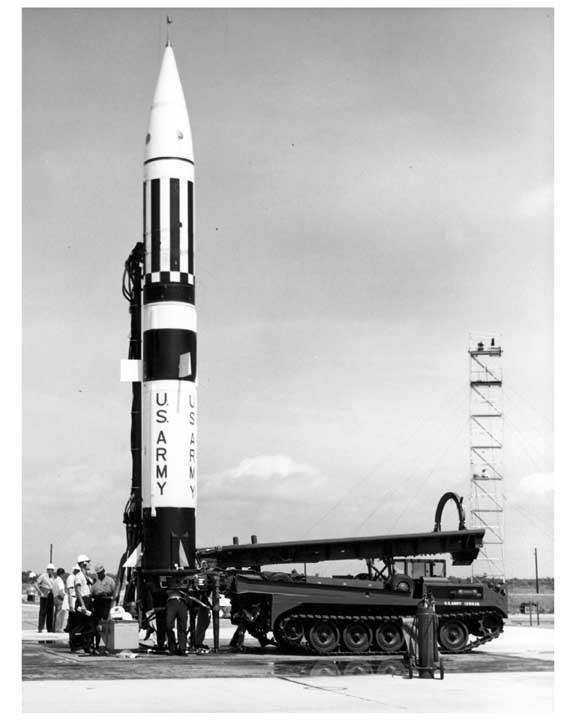 |
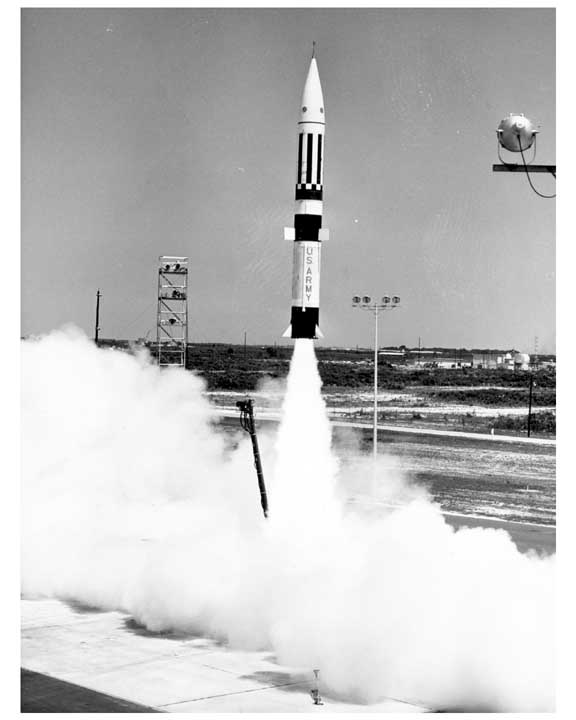 |
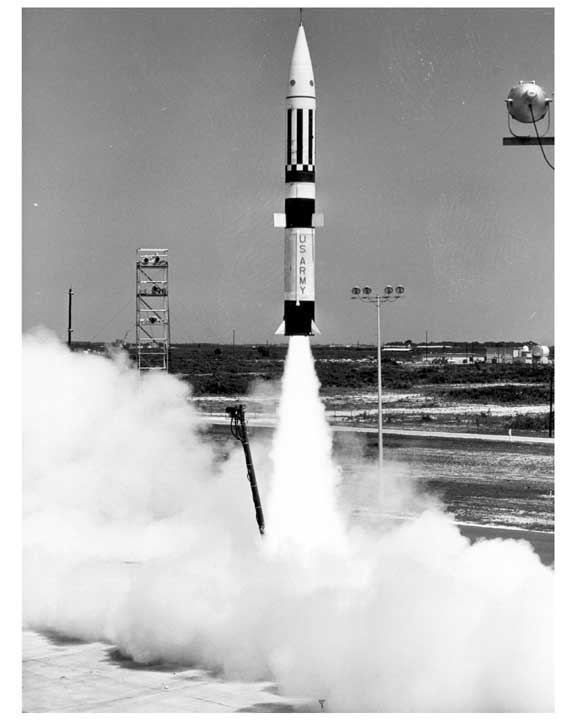 |
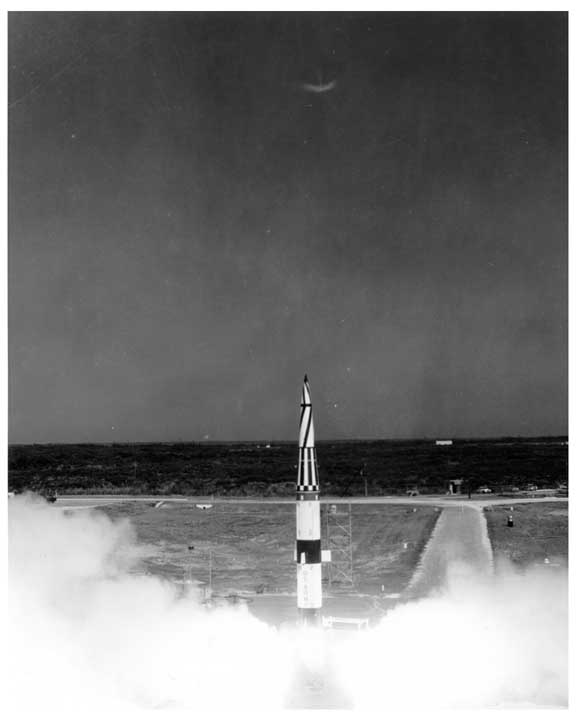 |
 |
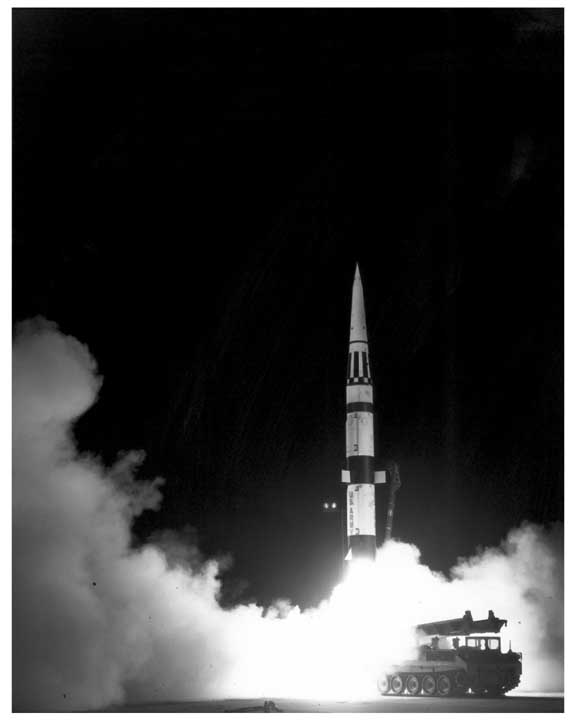 |
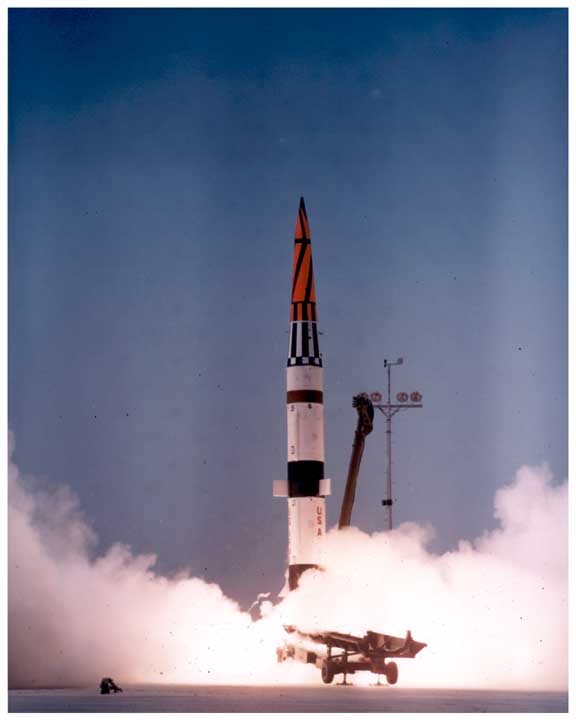 |
 |
 |
 |
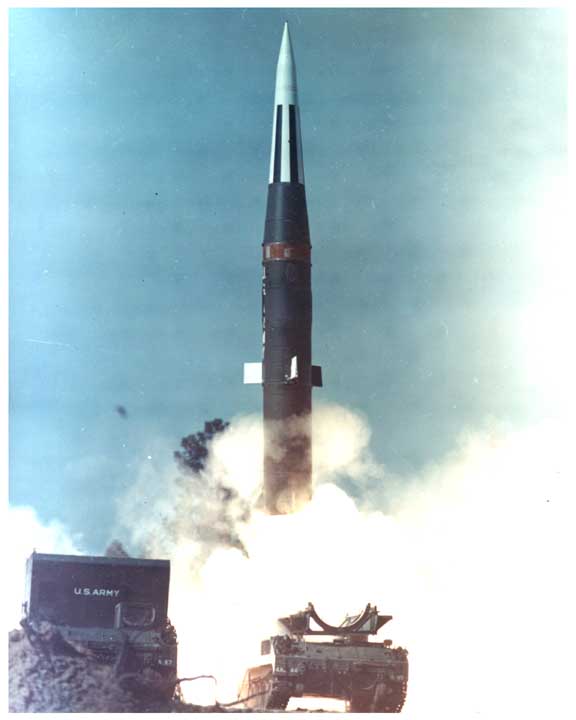 |
 |
 |
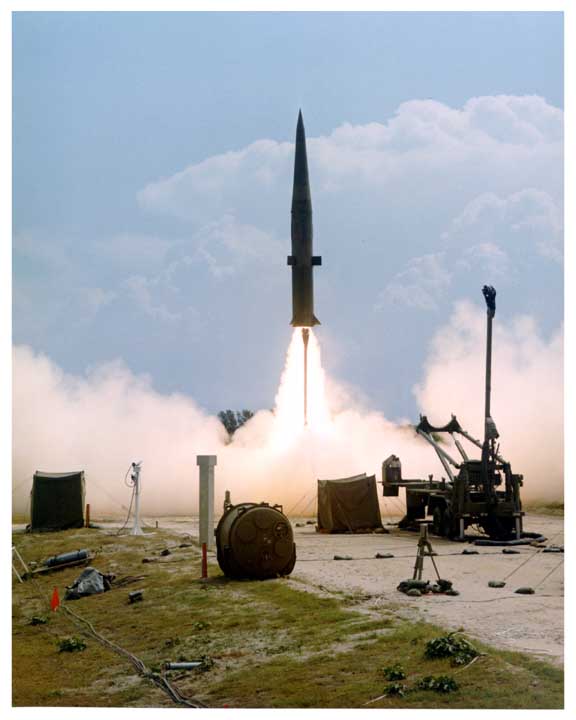 |
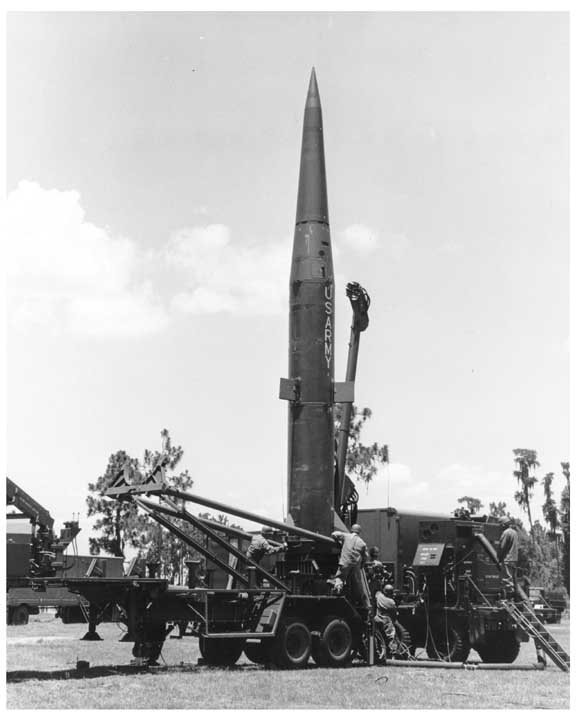 |
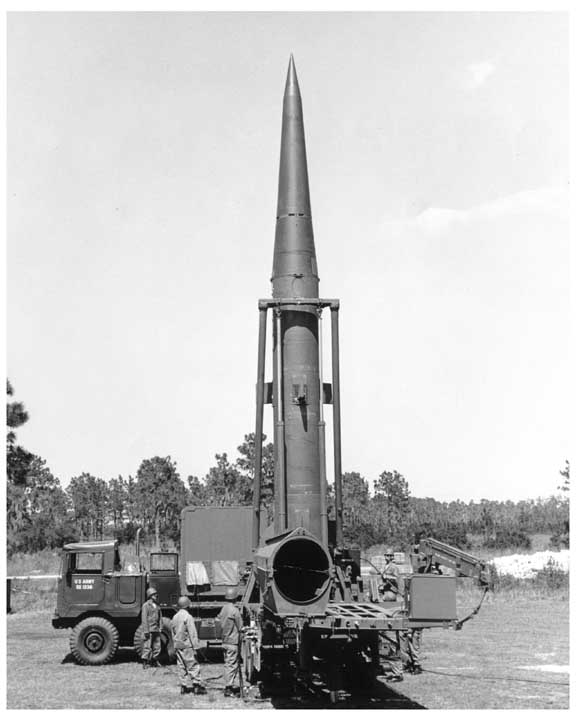 |
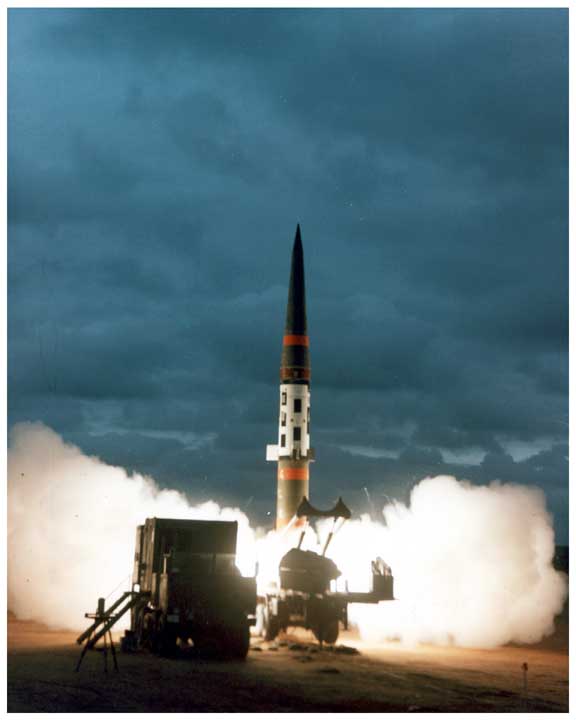 |
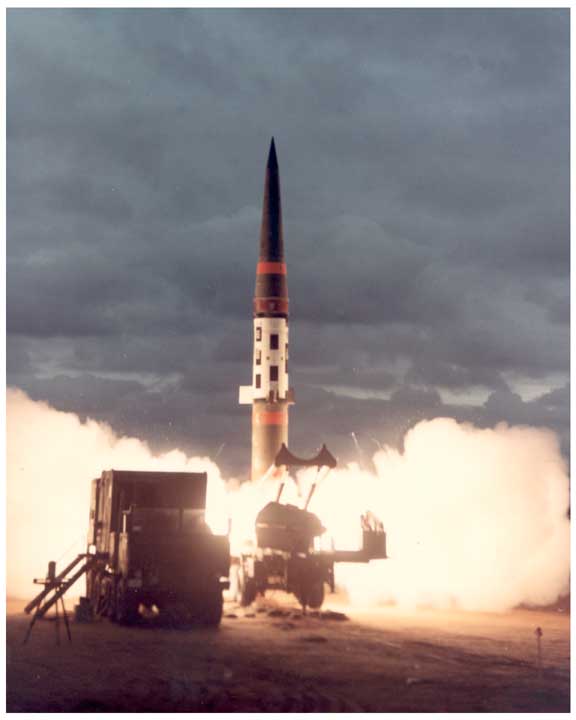 |
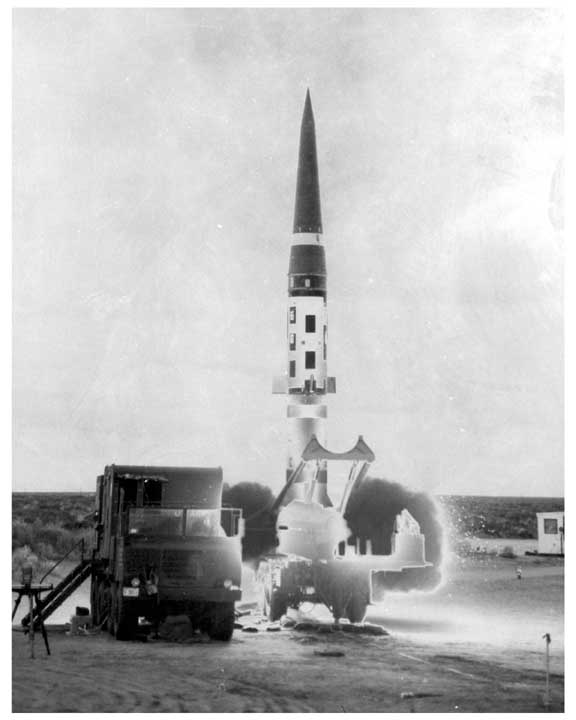 |
 |
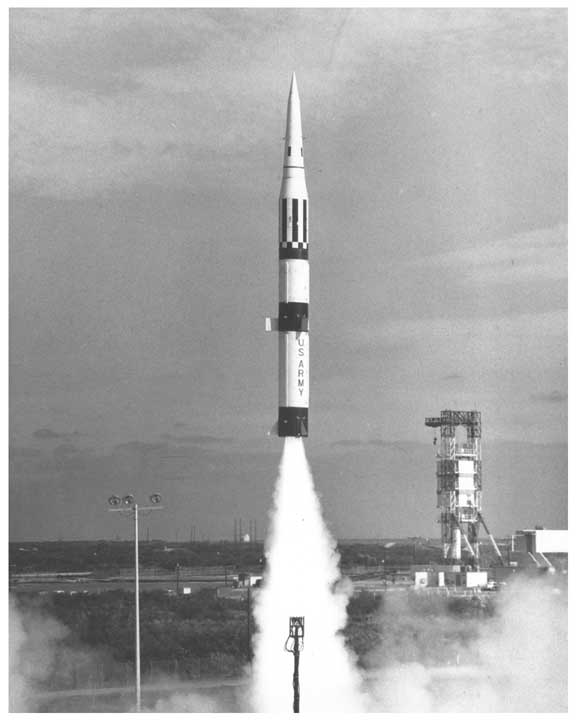 |
 |
 |
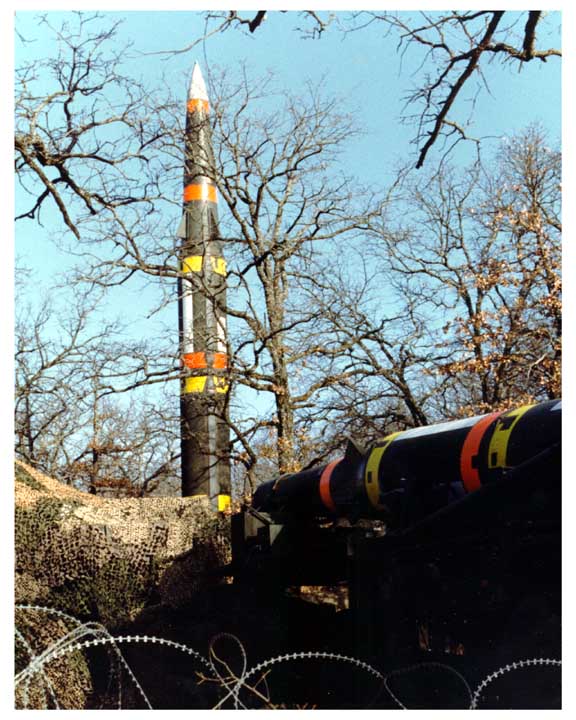 |
 |
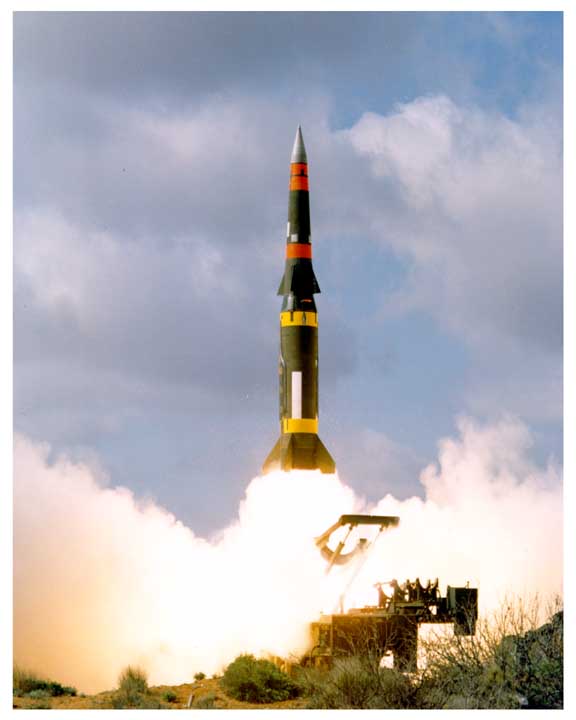 |
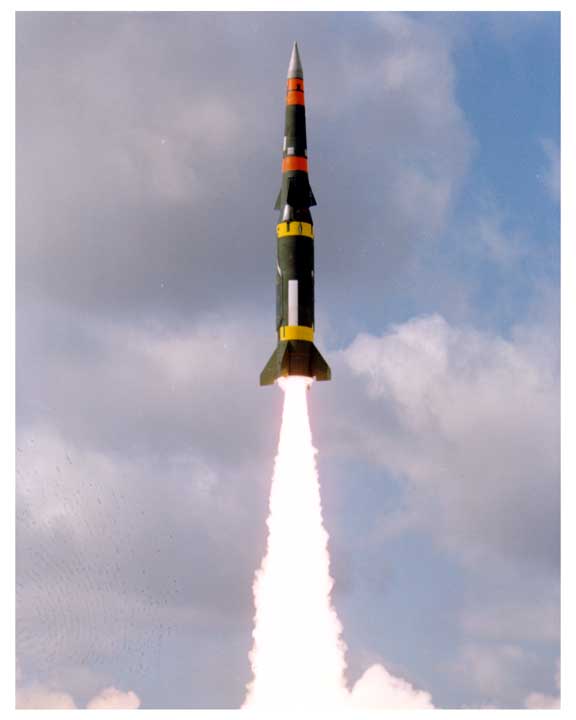 |
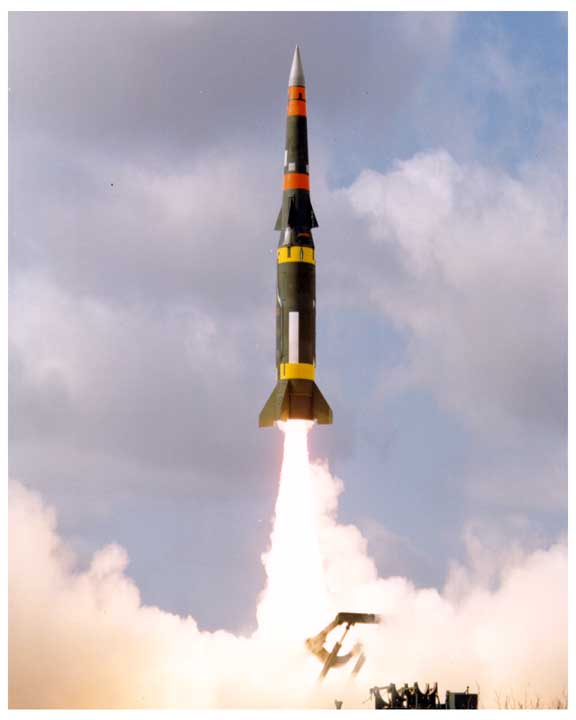 |
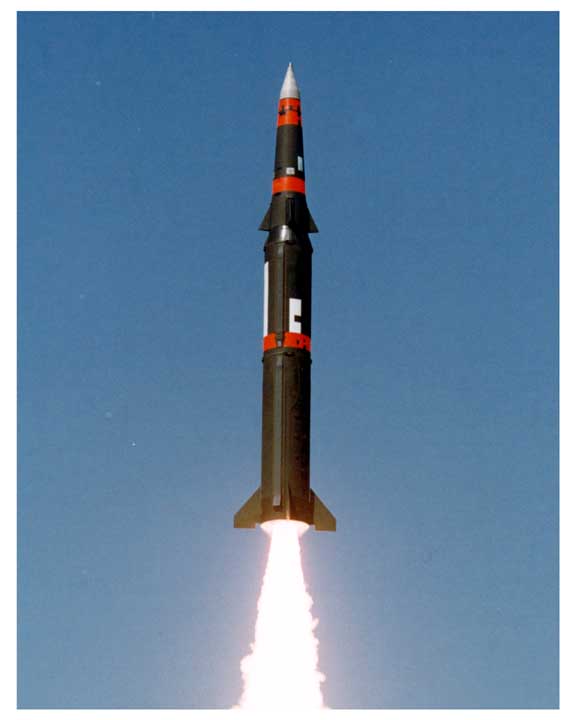 |
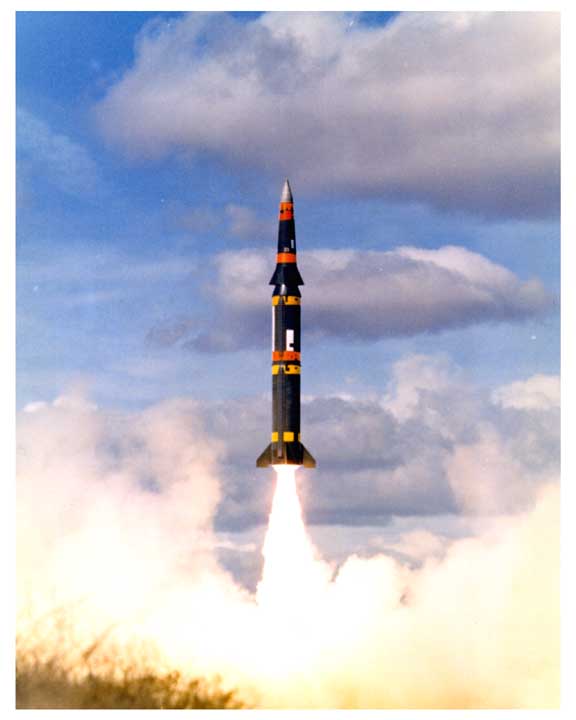 |
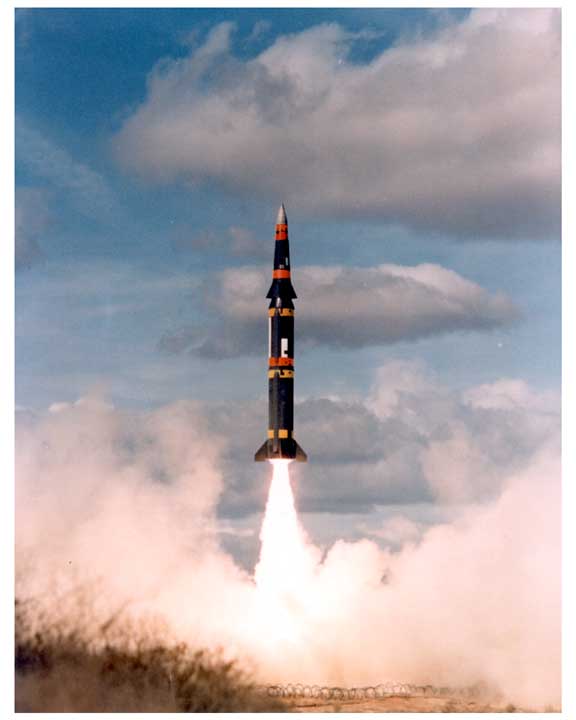 |
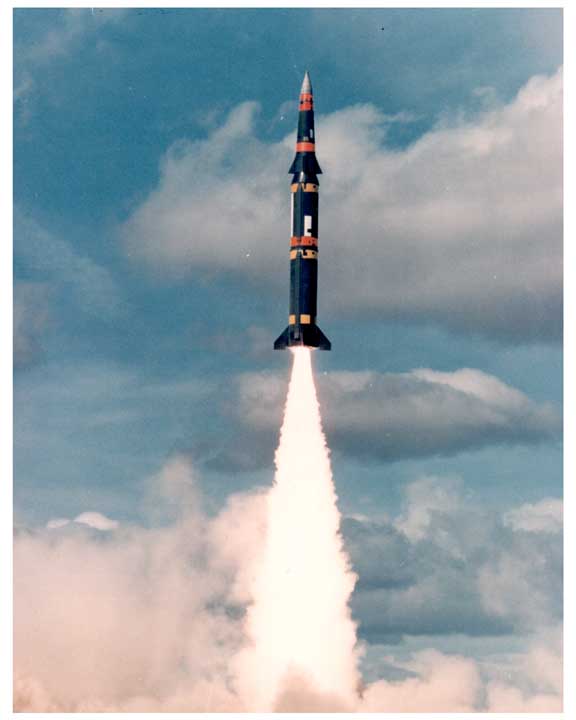 |
 |
 |
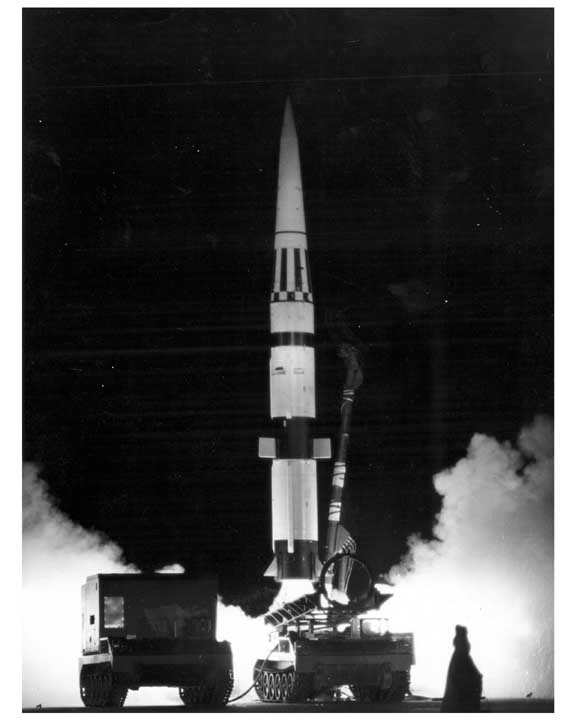 |
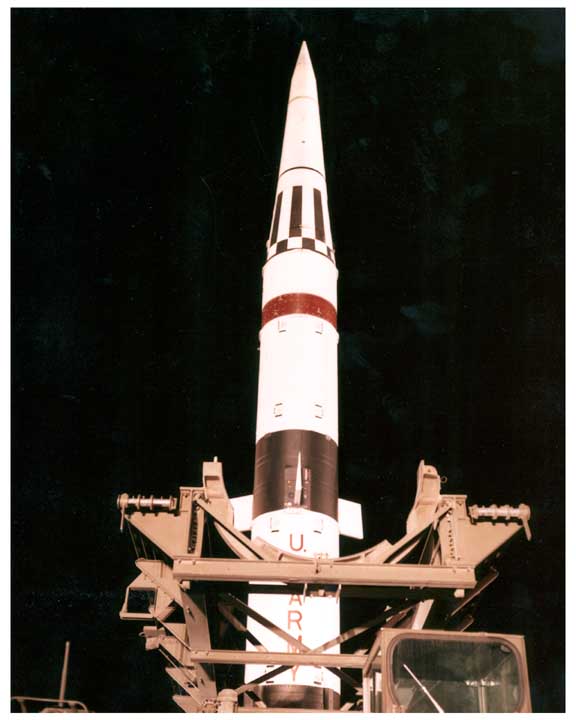 |
 |
 |
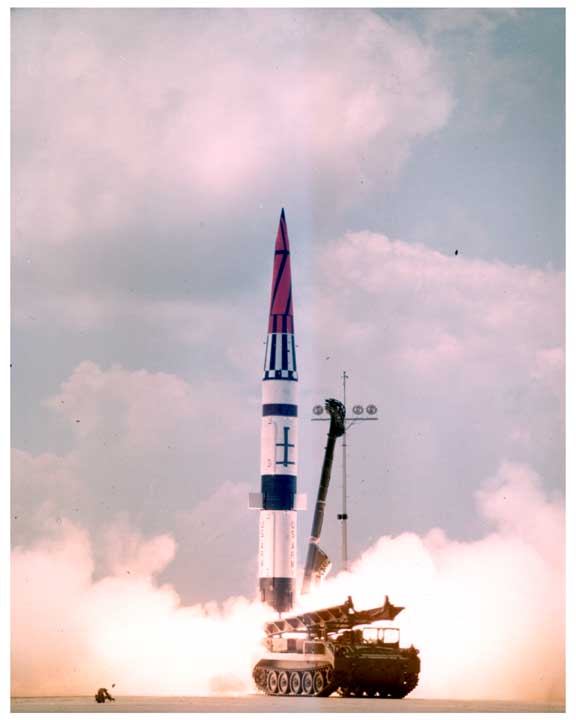 |
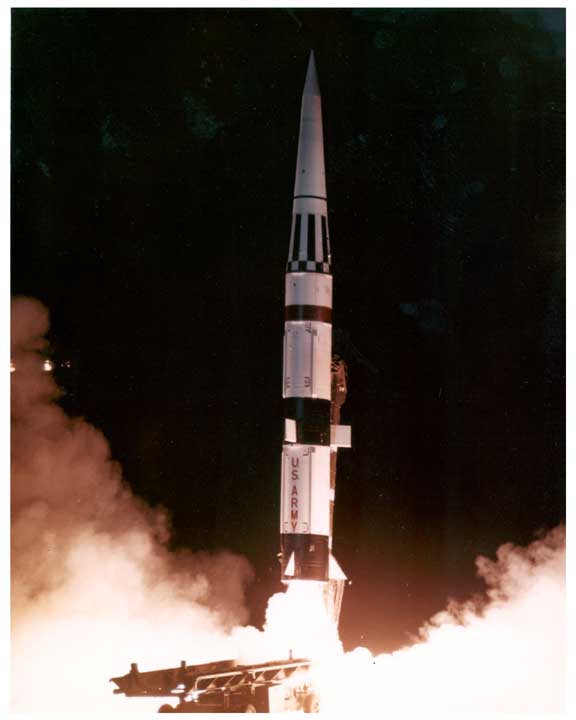 |
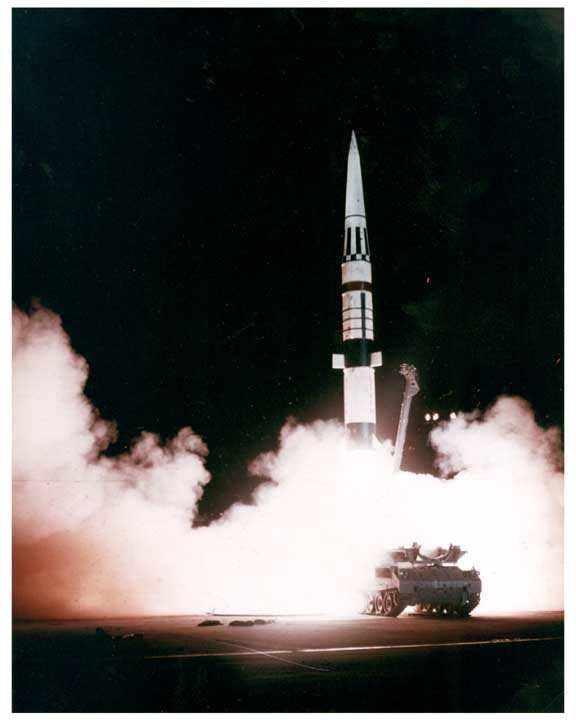 |
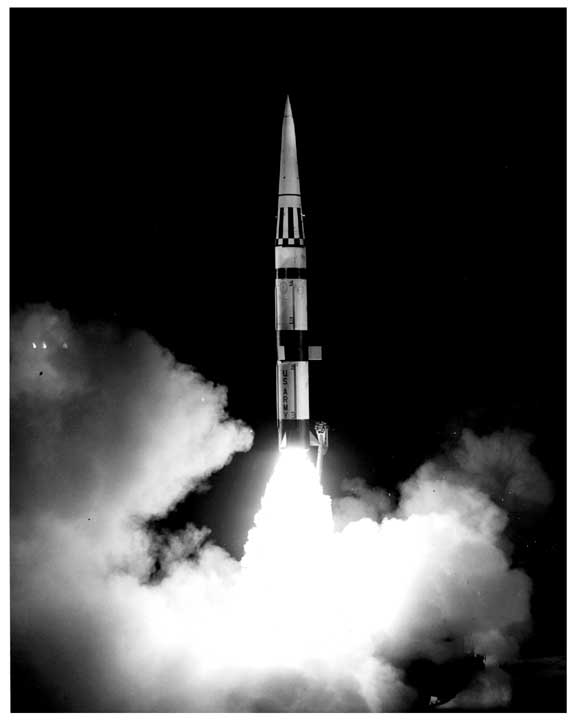 |
 |
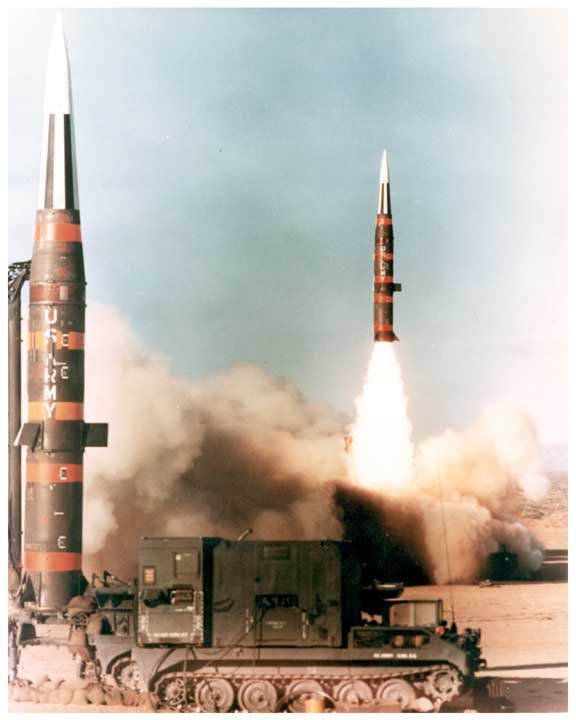 |
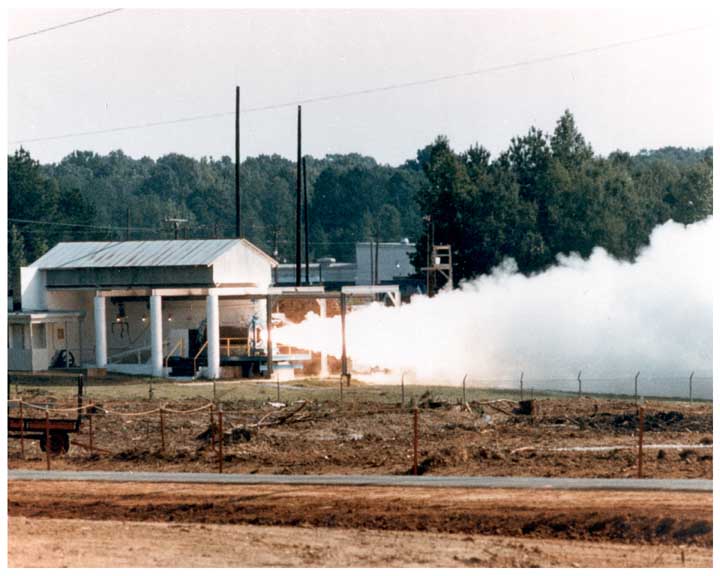 |
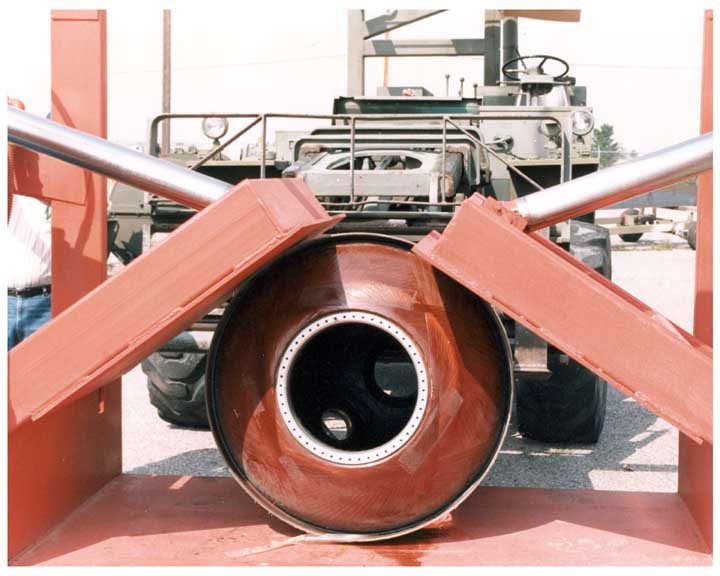 |
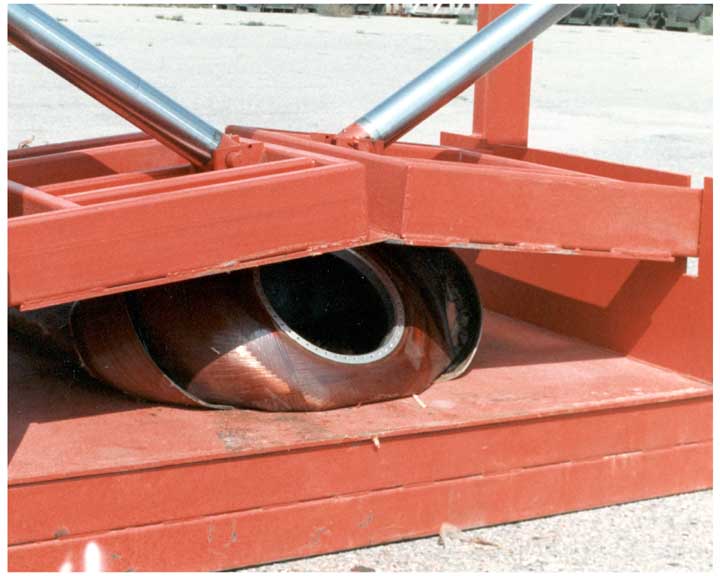 |
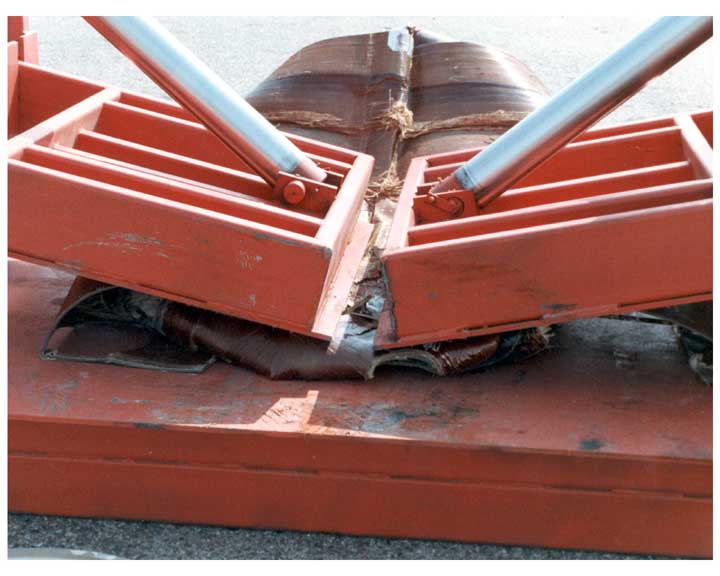 |
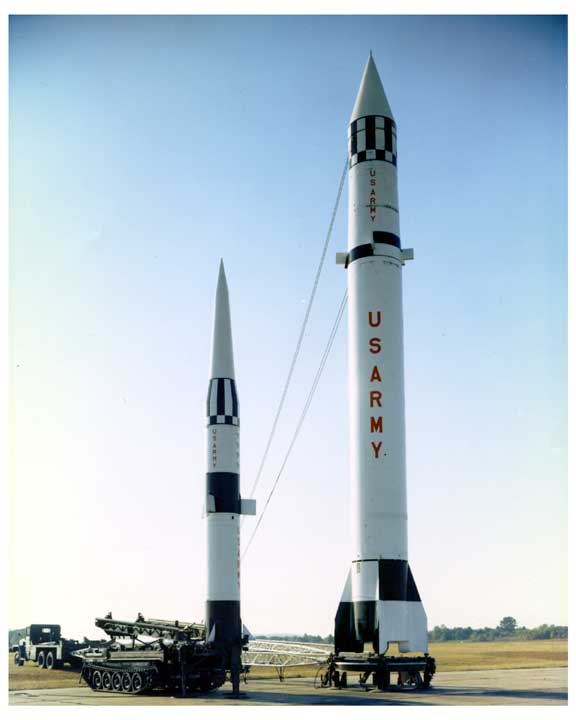 |
